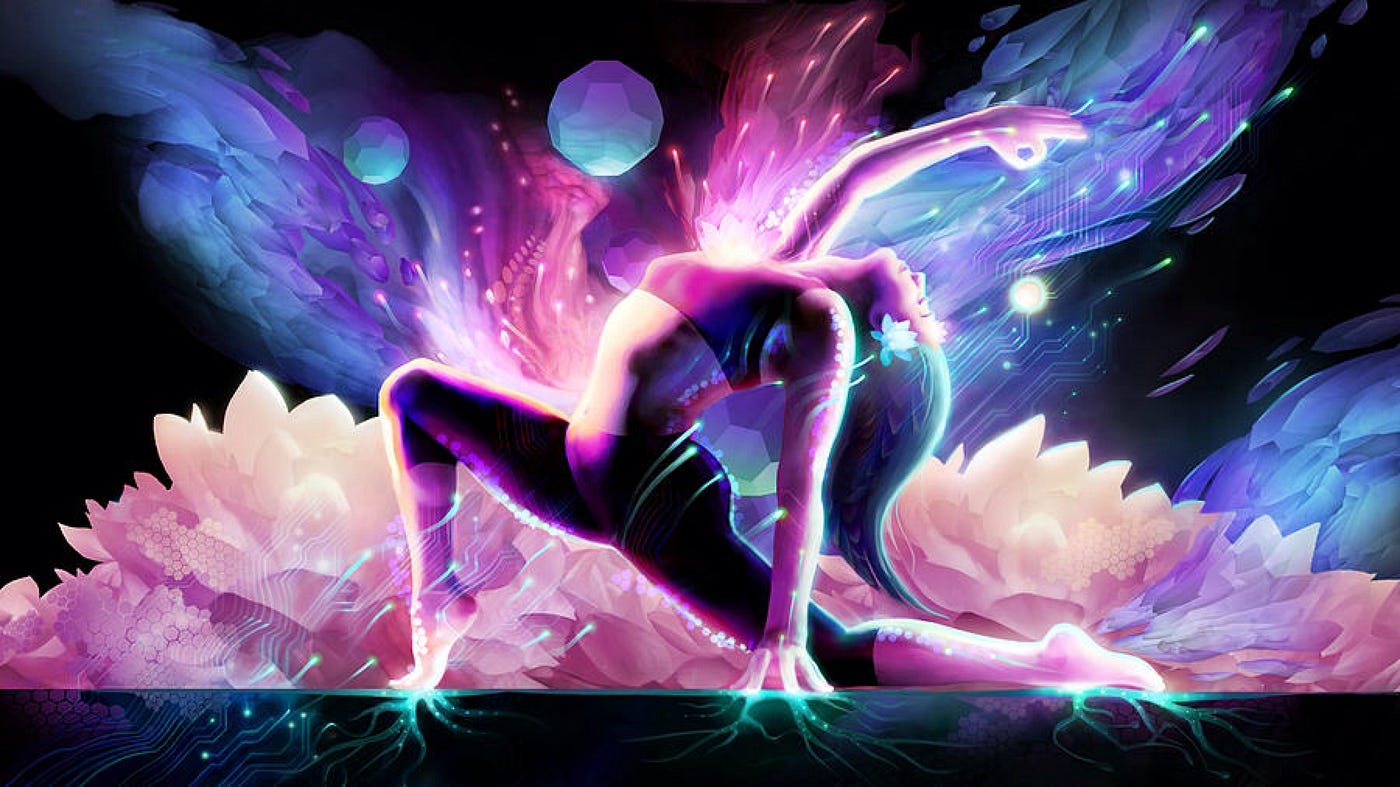We have the capacity to think several centuries in to the future, start the task even if it will not be fulfilled in your lifetime. This generation has a responsibility to reshape the world.”
– Dalai Lama
Definitions for the purposes of this article: A Vision of Yoga for our Time
Yoga: a combination of physical, mental and spiritual practices designed to establish Divine communion with one’s True Self
Yogic culture: knowledge, lifestyle and environmental design influenced by practitioners of the ancient yoga tradition.
Authors note:
The idea for this article (A Vision of Yoga for our Time) began with the intent of shedding light on the cultural appropriation of yoga and the need for its decolonization. However, I didn’t want to add my voice to an already well-worn criticism of how modern yoga has remained superficial by straying from its roots in its limited perception as a form of exercise and its increasing commercialization. After deeper contemplation, I saw how this could be part of a much larger mutual evolutionary process unfolding. Maybe what appeared as a ‘mistake’ was actually all part of a plan….it certainly wouldn’t be the first time that happened.
Hearing the Call
The growth of yoga is actually a forerunner in what appears to be a global phenomenon involving the return and appreciation of indigenous ways of knowing. How we treat yoga now can set a tone for our ability to recognize the roots and fruits of indigenous wisdom traditions and incorporate them with skillful means in a modern context.
Modern science has developed profound tools and models for understanding the personal, social and ecological problems facing us today, now we need to reach across the gap to the wisdom traditions of other peoples and respectfully understand how to deal with them. The world is a coal being compressed by population explosion, information overload and the rapid merging of cultures, and it is up to us to fashion it into a diamond. As we will see, yoga may have a more important role to play in this then we think.
There are no guarantees in life, other than you will inhale your first breath and that you will exhale your last. This is what yoga can make us aware of; We become conscious of the sacredness of what is being born, what is passing away and what lies beyond both, remembering what a gift life truly is. Life is impermanent and yoga asks us to strive for what is real, leading us to truth — if yoga is not doing this for you, perhaps question how you are approaching yoga. Without acknowledging its depth, yoga won’t develop our capacity for wisdom, love and peace — all gifts of true yoga practice.
As we face how and where our culture is dying, death-oriented or asking to be healed, we as yogis, or dare I say spiritual warriors, are responsible for learning how to heal it and recognize what wants to be born. Yoga from India isn’t the only traditional source of knowledge that will be needed as we make this transition to a more awakened society — but it is the one that the whole world is embracing at this time. Part of this renaissance is about the building of another proverbial ark to carry the stories, the songs, the practices and the people of the indigenous and wisdom traditions, including the western ones, to the shores of our ancient future.
As cultural creatives this may be some of the most important work of our time, and yoga is offering us an opportunity to get it right.
A Spiritual Renaissance
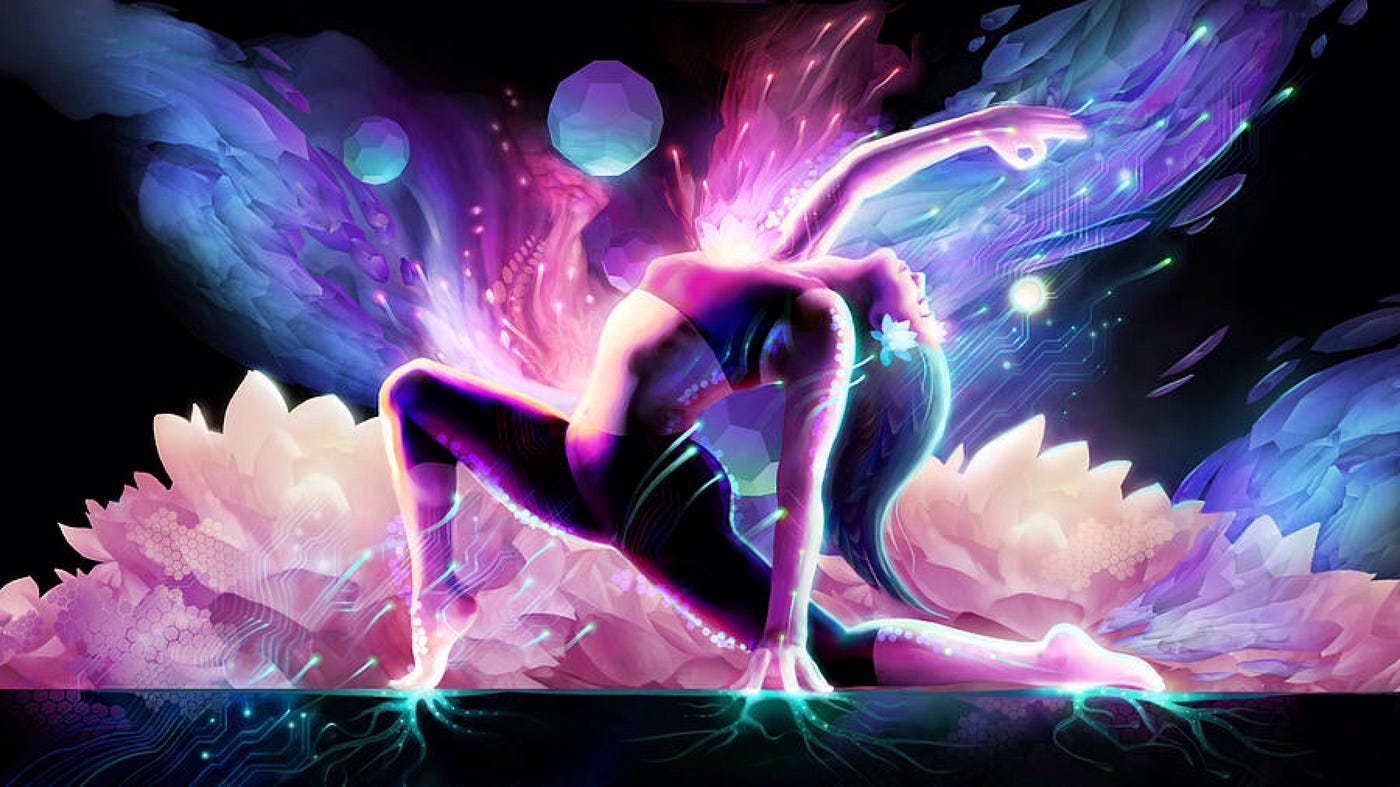
“The next twelve years are going to be a spiritual Golden Age”
Sadhguru (yogi, mystic and visionary — June 2016)
We are in the privileged position of being present during the early stages of a spiritual renaissance. The modern yoga movement is a decentralized global emergence that is largely driven by women and, despite its mostly physical orientation, is still connected to the most ancient wisdom in recorded history. Its rapid uptake from diverse cultures and demographics gives it the potential to bring about an inner revolution that ripples through all aspects of society. It does this by changing the patterns and frequencies moving through our most powerful tool — the body and mind — and opening the door to the source of love and all of its virtues — the heart. Yoga’s ancestors include the most enlightened people that have walked the earth, whose teachings have influenced the greatest spiritual activists and movements of our time.
Sounds too good to be true? Well, it is and it isn’t. Another billion people doing downward dog won’t create a revolution in society, but if even a portion of those people begin a genuine yoga practice the impact will be significant. The initial benefits of a purely physical yoga practice are a just a taste of what genuine yoga can offer. When combined with meditation, yoga philosophy, somatic psychotherapy and Transpersonal psychology, we can become integrated human beings who live as yogis in daily life. Yoga’s ability to change our patterns of thought and perception help us to see personal and social problems from a place of greater depth. As we learn to integrate genuine yoga practice and yogic culture into our world we will create healing in humanity and accomplish dreams never before thought possible.
The question if you are reading this is: “what role are you going to play?” If we tune our sights to the coming generation of youth and children, it is clear that the yoga movement itself may have a very important role to play in shaping the hearts and minds of those who hold the future of our planet in their hands. The United Nations is organizing dialogue with Yogic Masters for world yoga day on June 21st (led by Sadhguru), in recognition that yoga can play an important role in the realization of UN Sustainable Development Goals.
This shows that the mainstream is beginning to view yoga as more than just a physical practice. Yoga offers even more than just an individual lifestyle, in fact, the culture that produced yogis was designed to create an ecologically sustainable, socially just and spiritually fulfilling human presence on the planet earth. Is this not the very thing that we are looking for? Yogic practice and yogic culture address both the inner and outer landscape with a holistic perspective that is so clearly needed today.
So, it may be that the global rise of yoga is part of a resurgence — of ancient wisdom within our own genetic memories that are ready to be embraced by the modern world. By listening deeply with humility and imagination, we too can become like the yogis of the past and self-organize with this movement to catalyze spiritual and cultural transformation at a time when our world needs it most. This requires us to look beyond the reach of the conventional yoga mat and ask:
As yogis, are we ready to answer the call?
A science that can work
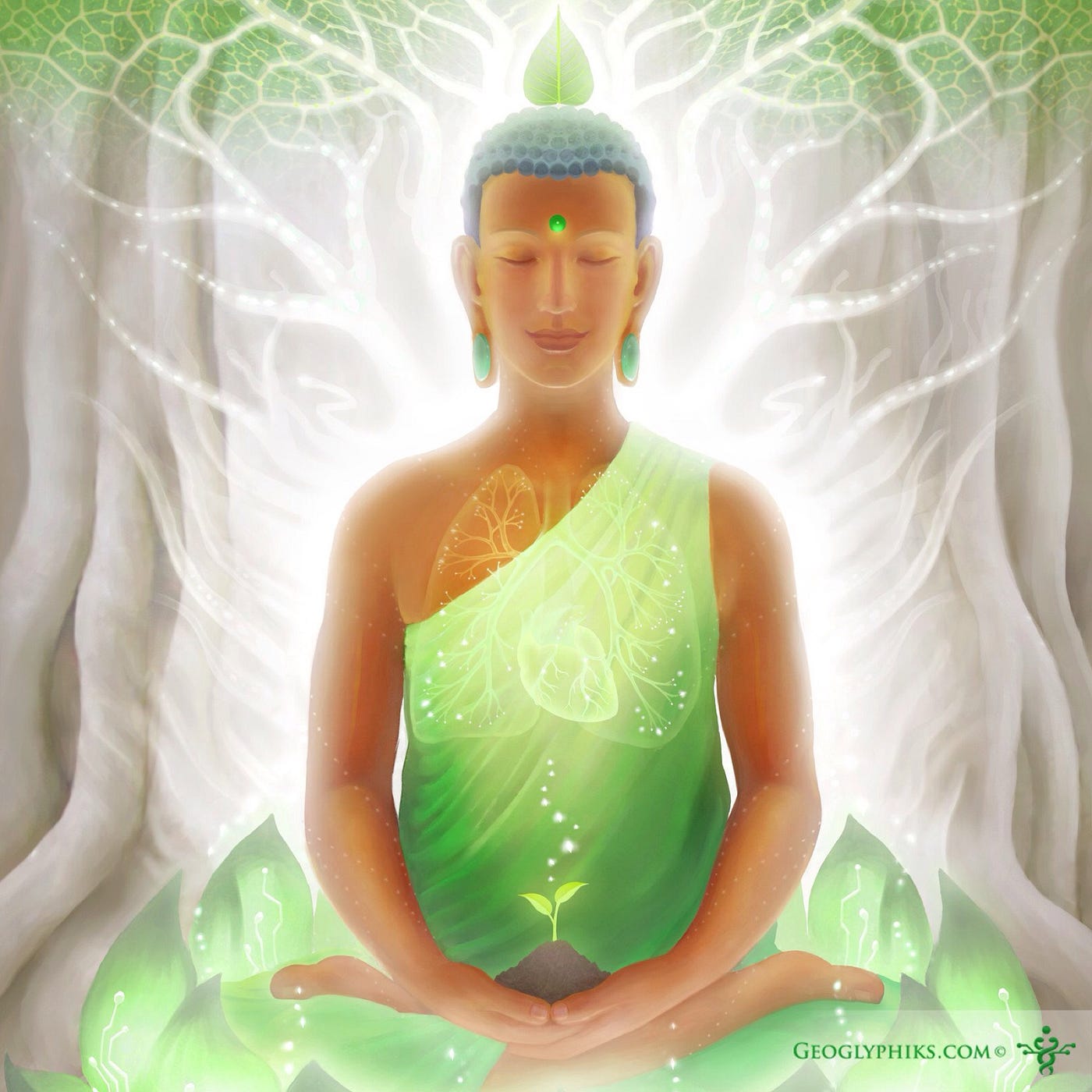
“Every part of creation is evolving, but in a controlled way to represent its physical and it’s subtle realms to evolve and reach the finesse of a part or group that it represents in the Divine Law of evolution”
Shri Ashutosh Maharaj-Ji (Enlightened Master, from the book Chaitanya)
Quantum physics, advances in molecular biology and new findings in cognitive neuroscience have all been validating the teachings of the ancient yogis. While the intent of this article is not to dive into these discoveries, science is revealing that we are indeed instruments of pure consciousness living in a completely interconnected universe, capable of shaping our reality through our body-mind-spirit connection. Yogic knowledge consists of a range of practices and ways of living that can help us translate our scientific discoveries into real-world applications — not just in terms of new gadgets but as an inner technology to shape consciousness and culture.
As the need for systems change has become more pressing than ever before, we are coming to realize that changes in structure without changes in consciousness do not hold water for very long. We need both to work together for lasting change, and yoga is a practice that works on both levels simultaneously by changing our physical and mental structures from within.
The next level of the yoga movement may happen on the cultural level, which parallels the developments in our understanding of fields such as epigenetics. We are learning that the way knowledge is put together and the space in which it is applied is as important as the knowledge itself. In the words of Daniel Goleman:
“epigenetics, the science of how our environment affects our genes, tells us that inheriting a set of genes is not enough for them to matter. They have the equivalent of a biochemical on/off switch; if they are never turned on we may as well not have them. There are many ways to activate genes and what epigentics shows is that it is the environment surrounding the cell that is the major influencer.”
A great deal of research is showing that the environment is absolutely critical in determining the activation and mutation of genes within the cell. The same analogy can be drawn for the practice of yoga. The spaces in which we practice and the culture that supports practitioners are of great importance in sustaining and enhancing the benefits of yoga — beyond just what can be done with the physical movements.
This environment includes our thoughts, feelings, how we learn, where we learn….basically the whole thing. Yogic practice and culture are designed to work as an interdependent, intelligent system to bring about lasting change in the internal and external environment by optimizing both nature and nurture. This science was clearly understood by the ancients all along, and if we learn to peer deeply into their intent, we can design yoga training, yoga spaces and yoga culture in a way that turns their knowledge into real results.
While there is a growth of evidence supporting how yoga practices aid and heal our body-mind connection in countless ways, there is little research to show how yoga spaces and yogic culture have an impact on the depth of individual learning, transformation and integration. This is because we are just beginning to allow yoga to shape us as a culture, and if we want to really reap the benefits of all that yoga has to offer, creating a yogic culture within a modern context is the next step in our evolutionary dance with this ancient wisdom.
Creating a yogic culture
“The invention of culture was a huge innovation for Homo Sapiens: creating language and a shared cognitive web of understanding that transcends any individual’s knowledge and life span — and that can be drawn on as needed and passed on to new generation…Each of these domains can be shared, and those who have the deepest reservoir of understanding in each are the guides and teachers of others.”
Daniel Goleman (bestselling author of Emotional Intelligence)
The question of culture, which is better expressed in sanskrit as “samskriti”, is at the root of this inquiry of how contemporary yoga can mature to help fulfill the vision of a transformed world. Samskriti is not so much about culture in terms of festivals, stories, food, language etc. It is about the inculcation of the character and cultivation of the full potentiality of the human being — this is what the culture is oriented towards. In the West we have a young culture that is seeking to develop a new pathway, a new dream, and in the process are looking for time-tested cultural practices and protocols to sink our roots in. Meanwhile, many of the old traditions that offer this are being threatened by modern values and need to be grafted in a way where the roots are preserved without being exploited, and yet open enough so that something new can emerge. It is a perfect match if we know how to bring them together correctly, and the yoga movement is a great opportunity to learn how.
In fact, this work has been going on long before yoga showed up on the big screen……
Self-Actualization and Spaces for Realization
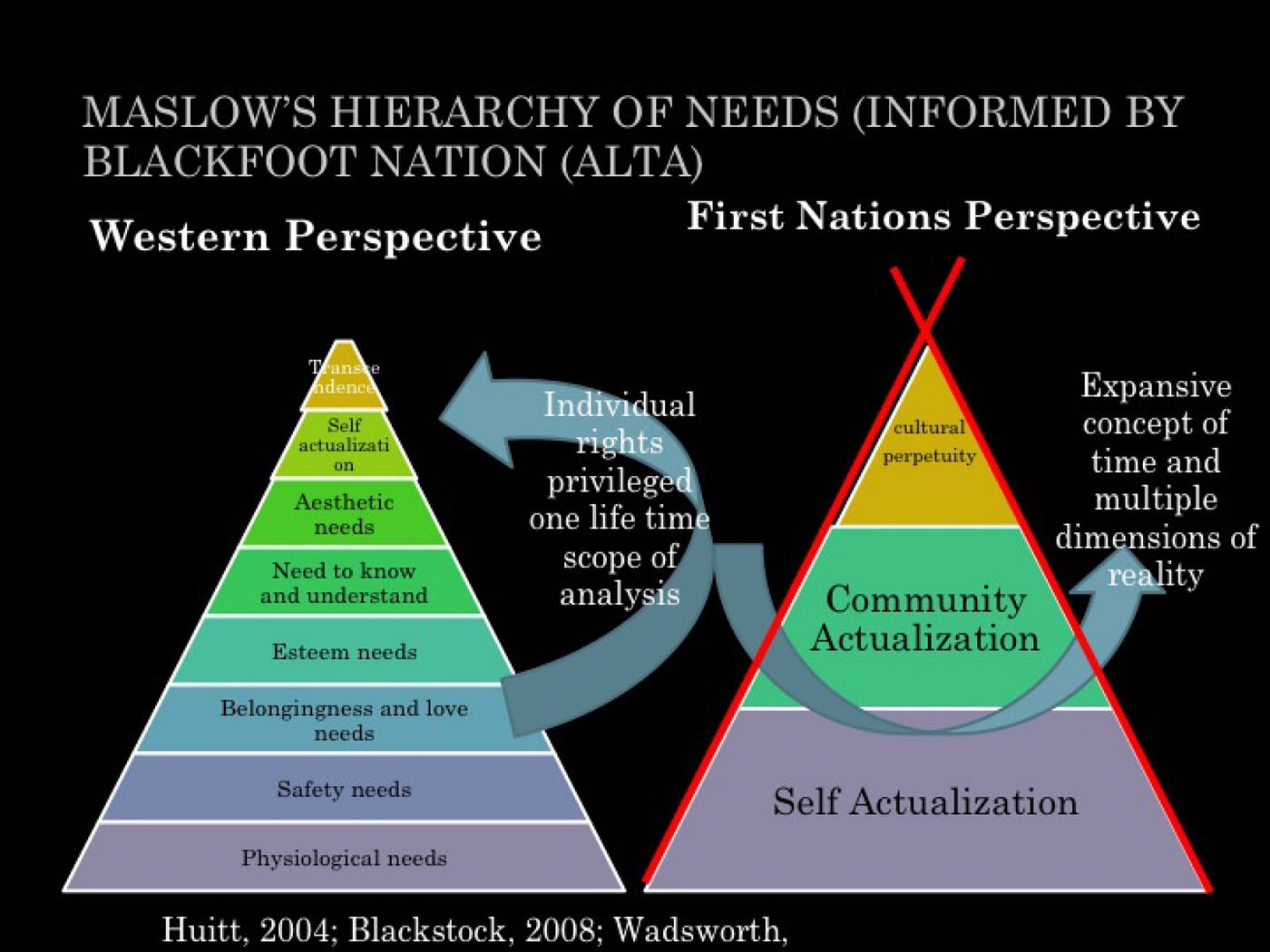
Abraham Maslow, one of the most important American psychologists, was the man who coined the term self-actualization:
“A musician must make music, an artist must paint, a poet must write, if he is to be ultimately at peace with himself. What a man can be, he must be. He must be true to his own nature. This need we may call self-actualization… This tendency might be phrased as the desire to become more and more what one idiosyncratically is, to become everything that one is capable of becoming.”
Over the course of his life he became fascinated by not only how individuals could self-actualize, but how the cultural conditions might be created for this to happen. He recognized that without the right environment individual self-actualization was very rare. His dream was for each person to realize the very best in ones nature — the same goal of the yogi and the intent of the yogic cultures of lore. (You can read about this from the “dharma” perspective here)
I recently came across this expanded version of Maslow’s hierarchy of needs, which is actually in the form of a tipi and used by the Blackfoot people of native America. Maslow visited the Blackfoot and was very influenced by their culture in a way that made him universalize his vision and ideal, throwing cultural relativism out the window. Looking at the Maslow’s Hierarchy from the Blackfoot perspective gives a beautiful understanding of how self-actualization is in fact at the base of a communal pyramid, with the pinnacle being cultural perpetuity; the ultimate goal is not self-actualization in isolation — individuals must share their wisdom to enrich the culture of their community and ensure that it is passed on to future generations.
A good way to look at the society is as an organism and the individuals as cells within in it. The yogi then becomes a white blood cell in the body of society, a force of knowledge, healing, spiritual unity and social action. The role of a yogi in such a culture is more than helping people to get a strong body or a moment of silence amidst their otherwise chaotic lives — they can do so much more. What if we had official institutions that trained yogis in such a manner — where to be a yogi was a declaration to self-actualize and enrich the whole, to become innovators of inner and outer processes that create cohesion, expansion and awakening within communities. These are the yogis that the future will need.
For this to happen we will need spaces designed not with the intent for profit alone, but with the intent of whole-scale cultural and spiritual renewal. This was the role of the temples, ashrams and gurukulas in our past. Such spaces were where young yogis were trained and people came to balance and renew themselves on all levels. They were places of art, knowledge exchange, meditation and ritual — all for the psychological, social, material and spiritual wellbeing of their communities. Having non-denominational spaces for spiritual evolution like this today is essential as a culture if we are to work together towards the regeneration of the Earths human and ecological body.
When this happens yoga will go from being just an outward movement to an inward-driven revolution. As Paul Hawken has stated, what we are experiencing now is Mother Earths “immune response” to the ills that afflict her life systems. Such spaces and yogis who are trained to steward and serve through them are an integral part of this response.
If not us, who? If not now, when?
Evolving the Yoga Studio
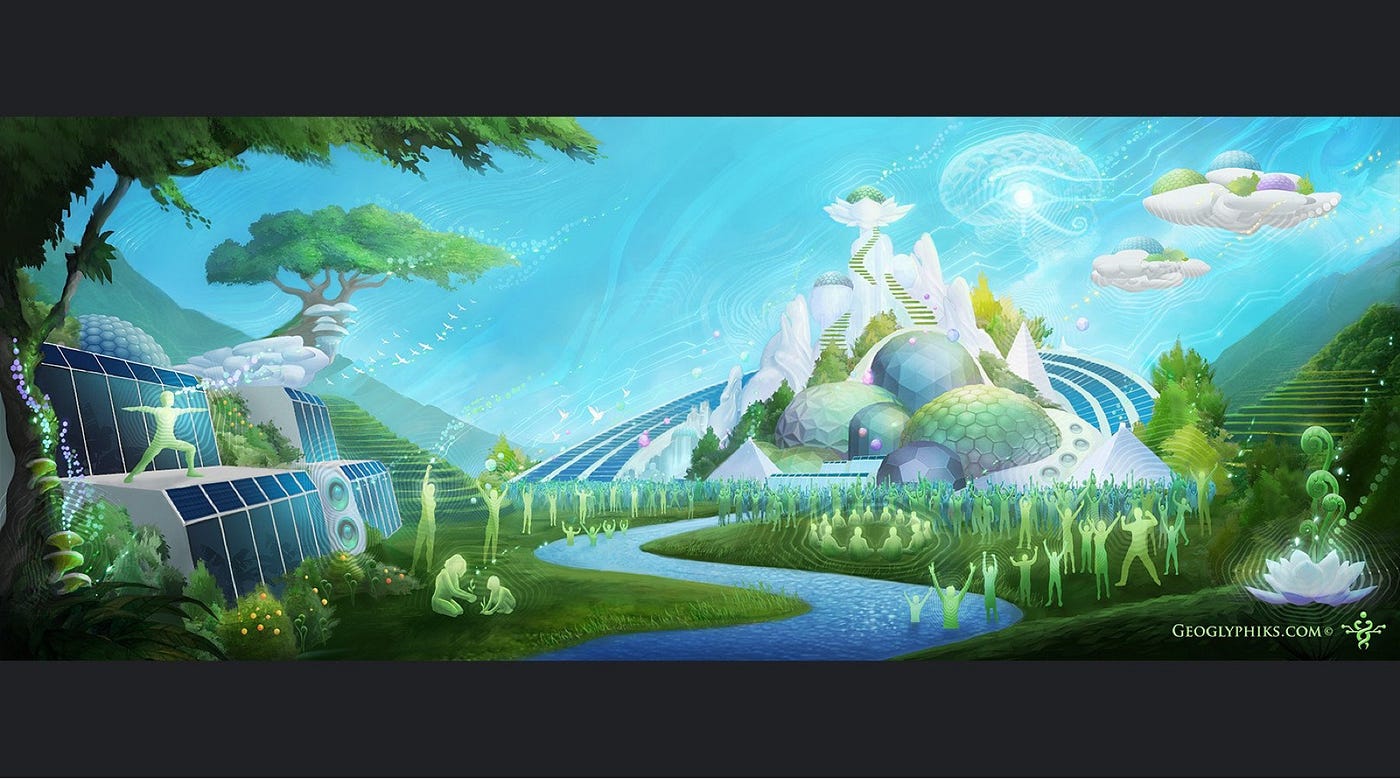
What if more of our yoga studios become centers like the ashrams that were nexus’ of Vedic knowledge in the times of old? Places where, instead of just strengthening the body, produced yogis who are trained in the outer and inner yogic sciences in natural health, astrology, physical culture, creative arts, energy medicine, spatial design and inner sciences? What if our schools begin to bring more than just an occasional yoga or mindfulness class, but began exposing children to a broader range of yogic subjects? What if these were taught be yogis who perceive the interconnections of the art, sciences and spirit, themselves established in a harmonious life flow?
If it can be dreamed, it can be realized.
I’ve seen how many young adults come to yoga teacher training programs looking for something real in life, hungry for spiritual knowledge and transformation. A yoga teacher training is a crash course for many who want to fill the gaping void of the mind-body-spirit education lacking from our mainstream educational model, in addition to the possibility of making a living doing something that helps rather than harms the planet.
Unfortunately, the absurdity of thinking that one can become a true yogi and teach the path to others after taking a 30 day course is lost on many. The result is that the bar is set too low and what is results is a mass-market yoga teacher population that diminishes the potency of what a thoroughly trained yogi can offer to society.
If a yoga teacher was seen in a similar capacity as a psychologist or a holistic health practitioner, this training would be far deeper and produce yogis with a remarkable synthesis of knowledge and practice to address more than just physical strength and flexibility. Such training would provide them with a purpose and path to self-actualization that truly has the fulfillment of ones complete potential as its goal. The ancient system of yogic education involved evoking and developing and individuals “dharma” and honing it through a training methodology based on universal principles that lead one to excel in the fulfillment of the primary aims of a human life.
A yogic education actually creates a whole human being, providing an inner self-regulating mechanism that teaches anyone how to integrate their personality with their higher self nature. The various subjects of a yogic culture prepare one to become a systems thinker that sees patterns and relationships between humans and the environment, enabling us to read the book of nature in a way that reveals its underlying intelligence.
Great educational thought leaders such as Daniel Goleman, David Orr, Rudolf Steiner and many others affirm that an education which fosters the whole human being is absolutely essential for ensuring a thriving future on our planet.
Agents of Cultural Transformation
Yogis trained in this way can really help individuals and communities to design their lives and systems in accord with its cosmic principles so that they experience the benefits of a more harmonious and balanced life. Imagine a society in which yogis, who are holistic practitioners of the most ancient spiritual technologies in the world, are respected and embraced as agents of cultural transformation rather than just exercise teachers?
Global statistics reveal that the diseases of today are rooted in the mind — depression, anxiety, social isolation, over-eating, technology addictions and more. The physical ramifications of these are immense, evidenced by the fast rise in chronic illness and suicides — particularly among youth. It is the human capacity for caring, inclusiveness, and spiritual evolution that creates a ground where the seeds of these diseases cannot take root. We cannot produce individuals that are able to thrive in joy, harmony and abundance in a culture that is based on negative images, fragmented thoughts, material attachments, lack of beauty and disconnection from nature.
The training of a yogi, first and foremost, is to learn how to become an integrated human being that can transmute a negative self-image into a positive one. This involves taking responsibility for ones physical and mental well-being and leads to becoming a guiding light for others and the culture as a whole.
For the first time in remembered history, we are at a turning point in our culture where the youth are being turned to as the source for the solutions for the significant problems of the day. We are seeing a democratization in learning, cross-cultural exchange is more alive than ever before, and the growing interest in both science and spirituality has prepared our emerging generation to pick up the threads of ancient wisdom and become vessels through which they may be woven into a modern context and flow to others. Build it and they will come, the saying goes. If we create the opportunity for it to happen, we will see a new generation of yogis emerging from our youth.
Our current governments are at a loss of what to do, and if ever before we needed a new generation of yogis, it is now. As Patanjali, the father of modern yoga has written, “now” is the first word of yoga sutras. He has assumed a preparation that has brought us, this very moment, to take up the practice of yoga and the incorporate its wisdom into our lives. It is my conviction that the convergence of forces in the world today has led us this moment to be ready to take up the responsibility of being a culture that produces true yogis for the physical, psychological, and spiritual well-being of our current and future generations, and it begins with a reclamation of yoga’s original intent. This is the wish and the blessing of our yogic ancestors, illuminated beings who revealed and developed these gifts of sacred knowledge over many millennia.
Spreading the message
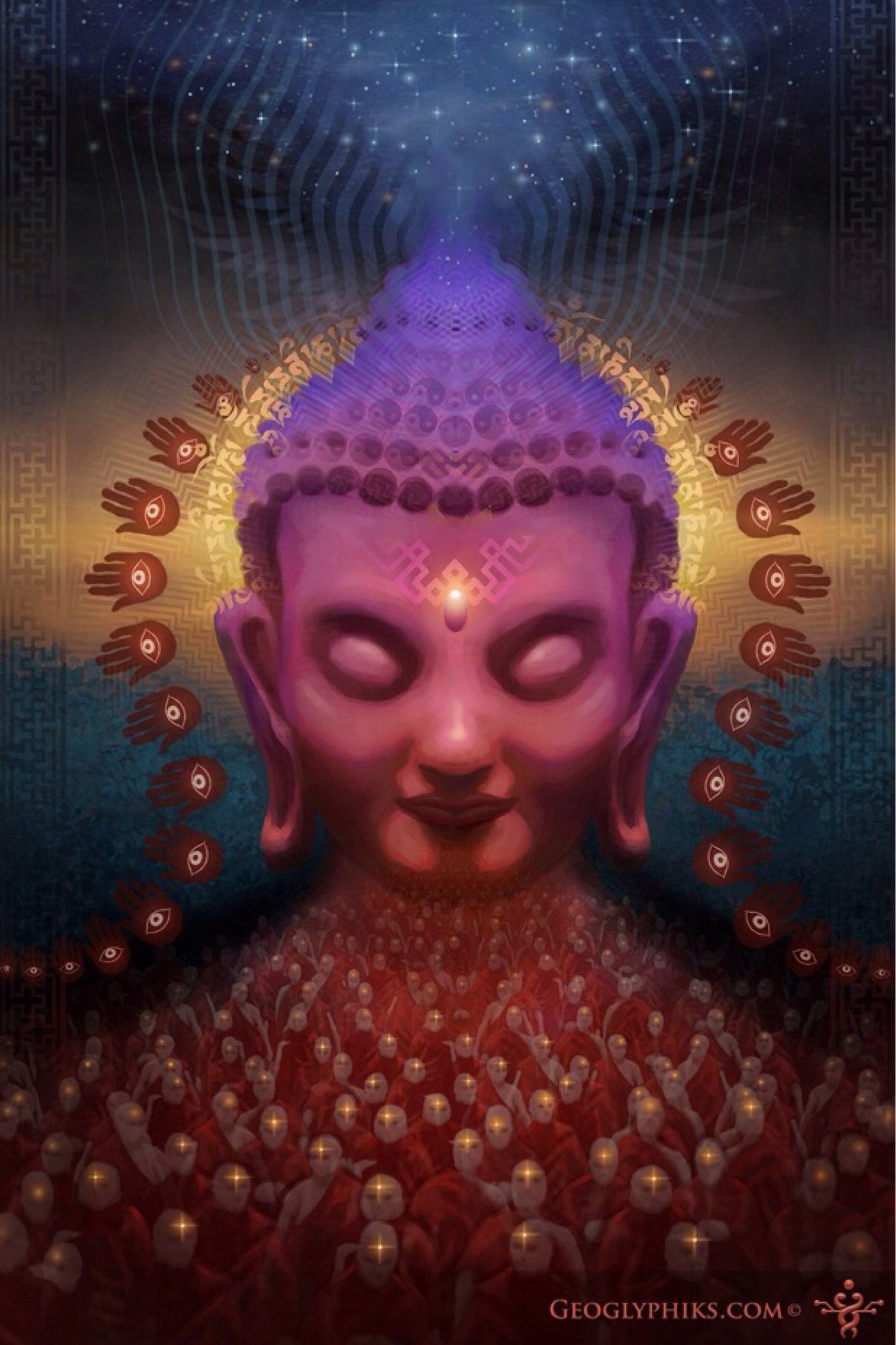
Every awakened yogi will have an immense impact upon the consciousness of humanity. Individually, each of us can discover the source of bliss within, develop our one-pointedness, find a flow in our movement and, in the midst of the world, abide in our center and exude the power of stillness and clarity. An integrated yoga practice can offer this to us, something we briefly experience when we arise from our shavasana and, in the words of William Blake, “ [our] doors of perception are cleansed, [and] everything appears as it is, infinite”.
This is the simplest gift yoga — where the play of light on a leaf, the speck of dust on the floor, and even the frown on another’s face, is revealed to us in all its beauty. For yoga is not asking us to be perfect, but rather enabling us to realize life’s inherent perfection while we work for personal and collective betterment.
Yoga shows us how our minds create our reality — the causes and conditions of happiness and suffering. This helps us take responsibility for the situations in our life and our world, we become more inclusive and discerning in our life choices and relationships. We recognize that life itself is a gift, and that this body and mind are means to learn the truth of who we are. It is from this space that we create the life we want, appreciate the sacredness of creation and tune into the message that yogis have been spreading for Millenia.
If the yoga movement creates this space in everyone it touches and empowers our younger generation with healing, knowledge and inspiration, we will see the greatest revolution in the history of humanity. This is the only true revolution that is possible — a revolution that arises within and moves out into the world through whole human beings.
Lastly, may we remember that yoga is really a gift. We honour this gift by representing it with integrity and humility as we work to preserve its roots while innovating with respect to serve the needs of today’ world.
May we navigate the tides of change into our uncertain future knowing that we are never alone, and that the presence and the support of our ancestors from all corners of the globe are still available to us whenever we open our hands with reverence and say, “yes!”.:
m of exercise and its increasing commercialization. After deeper contemplation, I saw how this could be part of much larger mutual evolutionary process unfolding. Maybe what appeared as a ‘mistake’ was actually all part of plan….it certainly wouldn’t be the first time that happened.
Follow Zamir’s writings Here on Medium
See Also: Evolution of Revolution
We have the capacity to think several centuries in to the future, start the task even if it will not be fulfilled in your lifetime. This generation has a responsibility to reshape the world.” – Dalai Lama Definitions for the purposes of this article: A Vision of Yoga for our Time Yoga: a combination of […]
A Vision of Yoga for our Time
